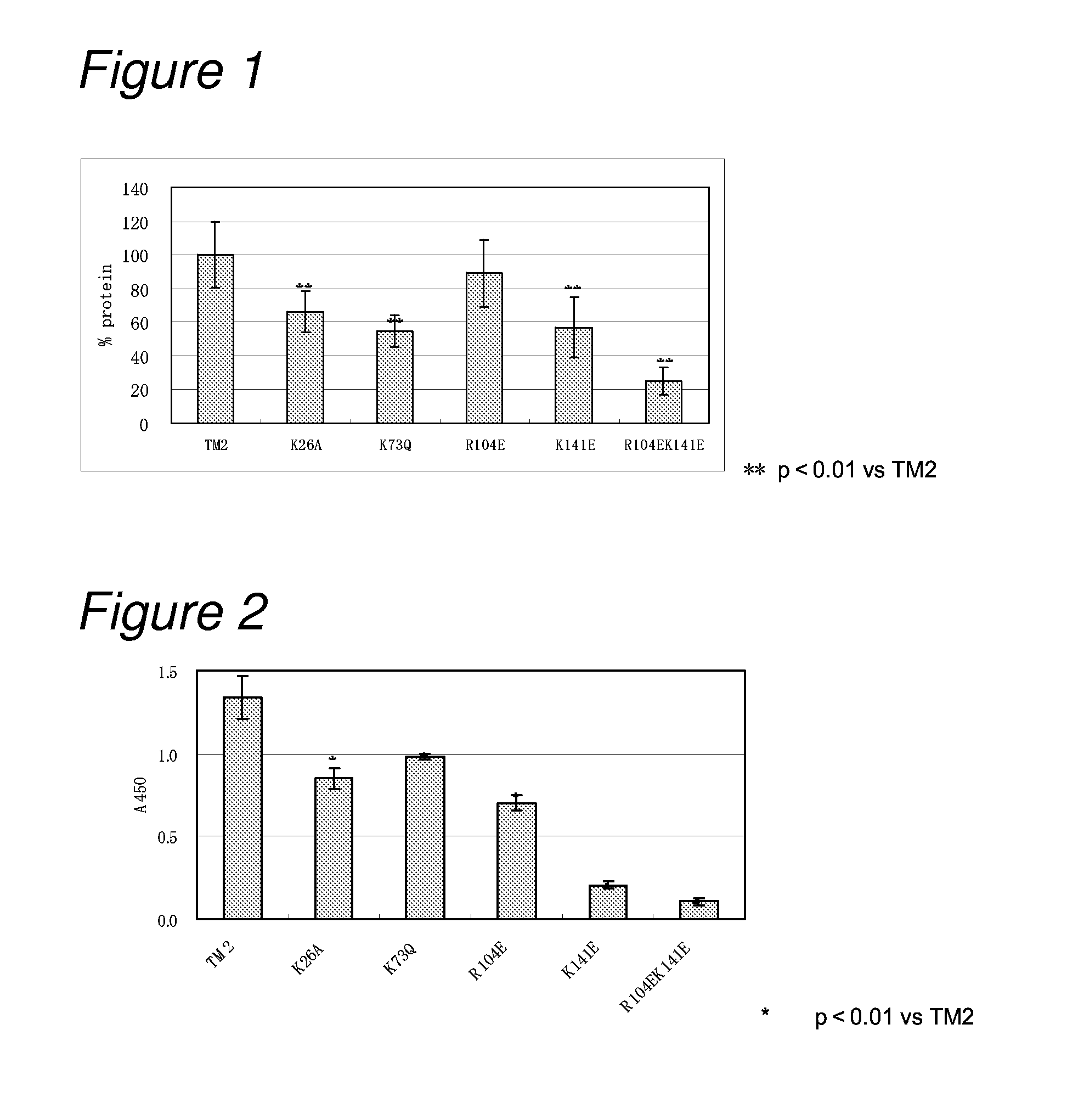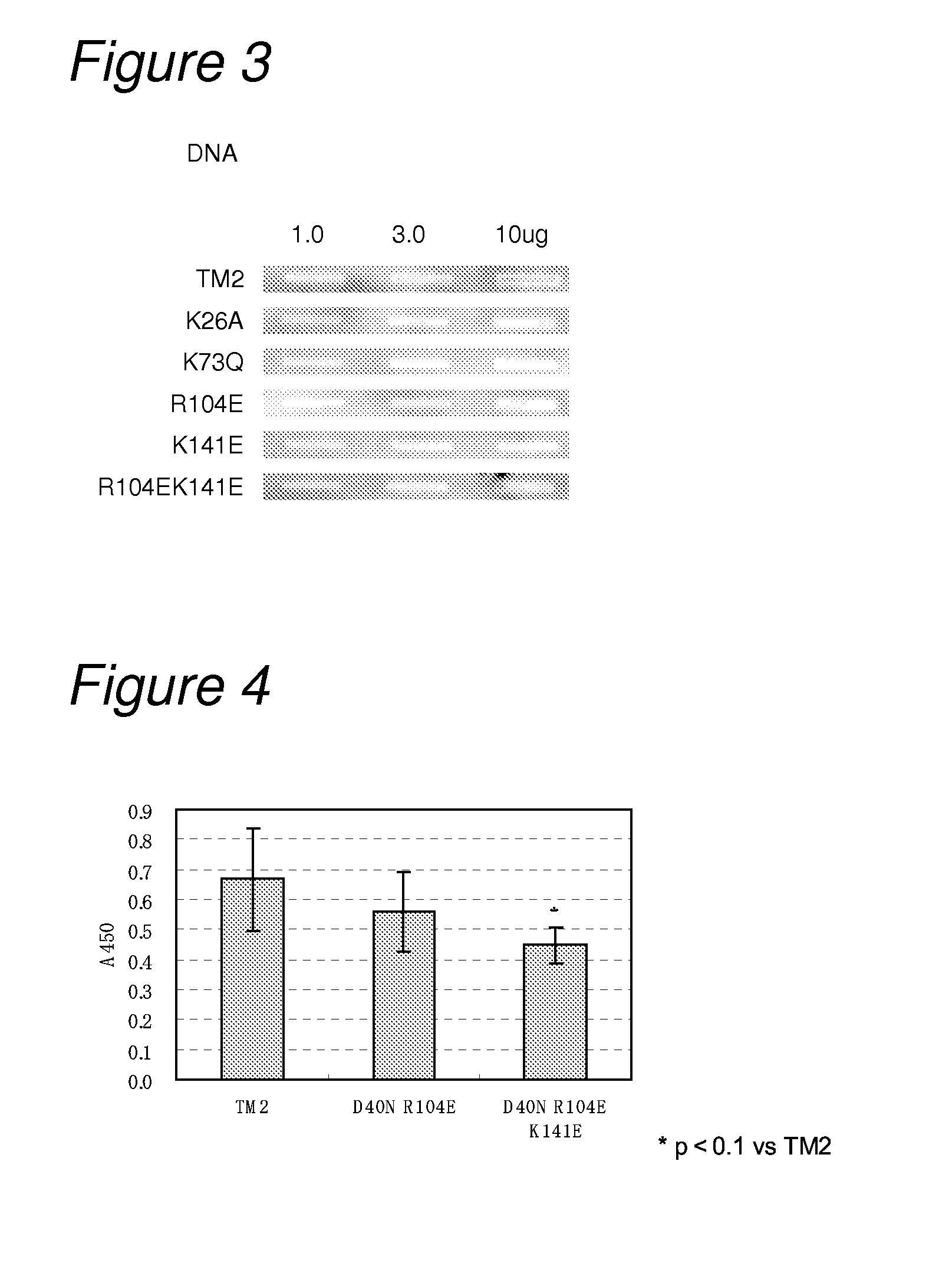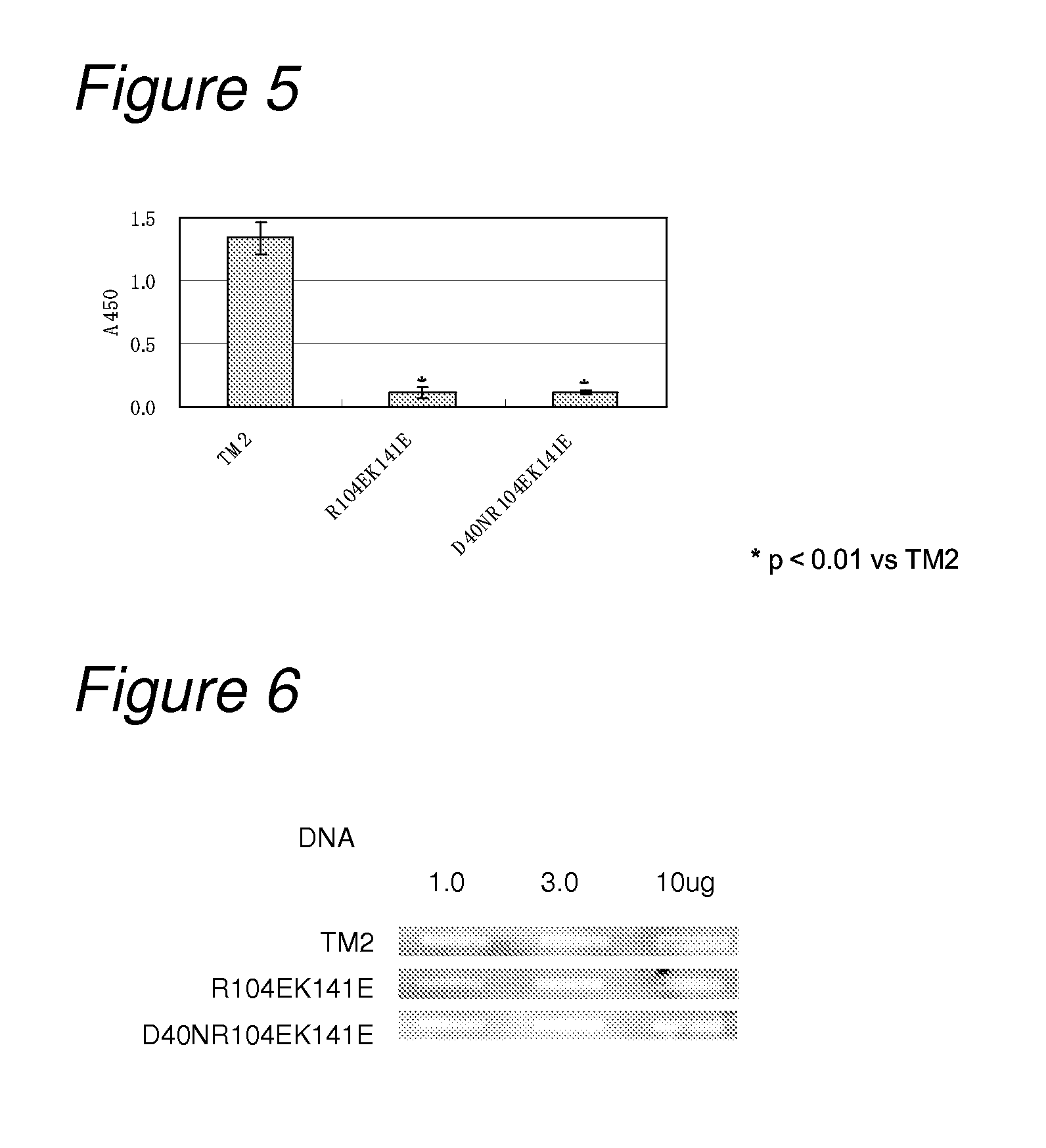Modified biotin-binding protein
a biotin-binding protein and modified technology, applied in the field of modified biotin-binding proteins, can solve the problems of long culture time, insufficient investigation, and insufficient study of sequence modification of avidin, so as to improve biotin-binding, reduce non-specific binding, and improve the effect of biotin-binding
- Summary
- Abstract
- Description
- Claims
- Application Information
AI Technical Summary
Benefits of technology
Problems solved by technology
Method used
Image
Examples
example 1
Construction and Analysis of Low-pI TM2
[0161]1-1) Construction of Low-pI TM2
[0162]In order to reduce the isoelectric point of TM2, a basic amino acid residue in TM2 was replaced with a neutral amino acid or an acidic amino acid to construct the following seven mutants.
[0163](1) a TM2 mutant in which lysine at position 26 was replaced with alanine (hereinafter referred to as “TM2 K26A”; its nucleotide sequence is listed in SEQ ID NO: 3 and the amino acid sequence in SEQ ID NO: 4);
[0164](2) a TM2 mutant in which lysine at position 73 was replaced with glutamine (hereinafter referred to as “TM2 K73Q”; its nucleotide sequence is listed in SEQ ID NO: 5, and the amino acid sequence in SEQ ID NO: 6);
[0165](3) a TM2 mutant in which arginine at position 104 was replaced with glutamic acid (hereinafter referred to as “TM2 R104E; its nucleotide sequence is listed in SEQ ID NO: 7, and the amino acid sequence in SEQ ID NO: 8);
[0166](4) a TM2 mutant in which lysine at position 141 was replaced wi...
example 2
Construction and Analysis of High-affinity TM2
[0218]2-1) Construction of High-affinity TM2
[0219]In order to verify the enhancement of affinity to biotin, amino acid mutation was introduced into TM2.
[0220]Some streptavidins are publicly-known, for example, streptavidin v2 (Deposit Number: Q53533, Bayer, et al., (1995) Biochim Biophys Acta 1263: 60-66) and streptavidin v1 (Deposit Number: Q53532) from Streptomyces violaceus, and Streptomyces avidinii streptavidin (Deposit Number: P22629, Argarana, et al., (1986) Nucleic Acids Res 14: 1871-1882) from Streptomyces avidinii. As is described in WO02 / 072817, the amino acid sequence homologies of these streptavidins to the TM2 protein are each 50%, 48%, and 48%, i.e., about 50%.
[0221]The present inventors have supposed that a structure similar to that of streptavidin is necessary for maintaining or enhancing the biotin-binding ability of the TM2 protein. Accordingly, the amino acid sequences of streptavidin and TM2 were compared for the try...
example 3
Construction and Analysis of Low-non-specific Binding / High-Affinity TM2
[0258]3-1) Construction of Low-non-specific Binding / High-Affinity TM2 (HALU TM2: High Affinity and Low Non-Specificity)
[0259]Mutation for decreasing non-specific binding and also increasing affinity to biotin was introduced into TM2.
[0260]As mutation for decreasing non-specific binding, on the basis of the results in Example 1, mutations of R104E and K141E were introduced as amino acid mutation for reducing non-specific binding. As mutation for increasing the affinity to biotin, on the basis of the results of biotin-binding ability measured in Example 2, the mutation of D40N was introduced. That is, constructed were a TM2 mutant having mutation of D40N and R104E (hereinafter referred to as “TM2 D40NR104E”; its nucleotide sequence is listed in SEQ ID NO: 21, and the amino acid sequence in SEQ ID NO: 22) and a TM2 mutant having mutation of D40N and R104EK141E (hereinafter referred to as “TM2 D40NR104EK141E”; its nu...
PUM
| Property | Measurement | Unit |
|---|---|---|
| molecular weights | aaaaa | aaaaa |
| temperatures | aaaaa | aaaaa |
| temperature | aaaaa | aaaaa |
Abstract
Description
Claims
Application Information
 Login to View More
Login to View More - R&D
- Intellectual Property
- Life Sciences
- Materials
- Tech Scout
- Unparalleled Data Quality
- Higher Quality Content
- 60% Fewer Hallucinations
Browse by: Latest US Patents, China's latest patents, Technical Efficacy Thesaurus, Application Domain, Technology Topic, Popular Technical Reports.
© 2025 PatSnap. All rights reserved.Legal|Privacy policy|Modern Slavery Act Transparency Statement|Sitemap|About US| Contact US: help@patsnap.com



